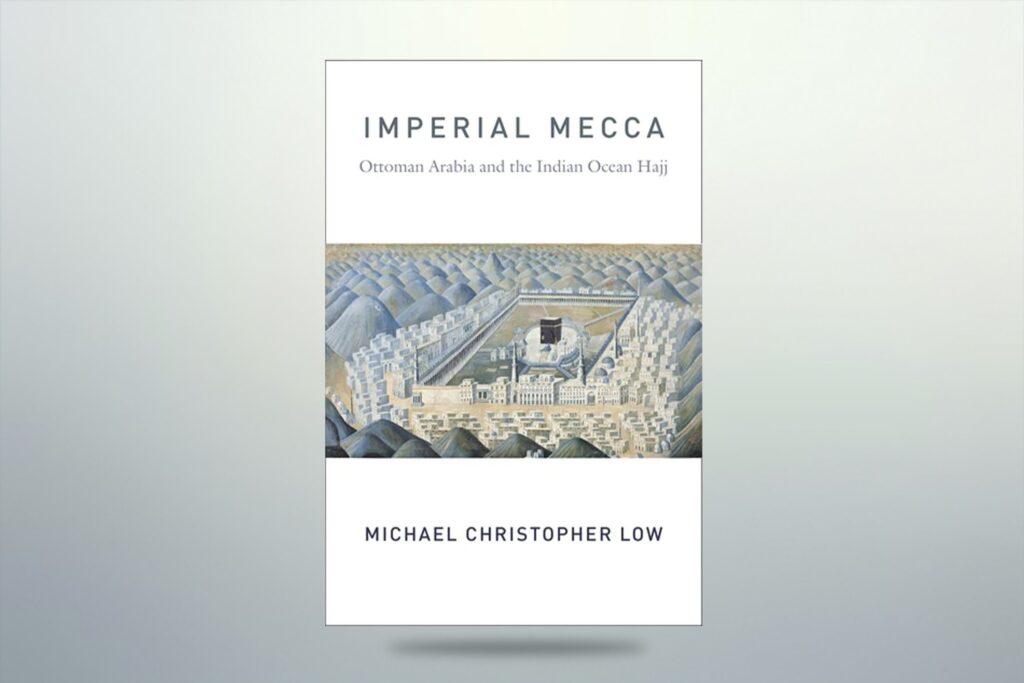Imperial Mecca is a significant study that bridges Ottoman and Indian Ocean studies, offering a fresh perspective on the complexities of empire, religion, and technology in the late 19th and early 20th centuries. Masterfully weaving together Ottoman and British historiographies, Michael Christoper Low focuses on the Hijaz region as the nexus of competing imperial interests.
The book comprises three parts — an examination of the interplay of sovereignty and extraterritoriality, epidemiology and infrastructure, and mobility and governance. One of the book’s major strengths lies in its extensive use of Ottoman archives in providing an alternative to the more common take on the haj, which relied mostly on British and other European sources. This approach allows Low to present a nuanced view of Ottoman administration in the Hijaz, challenging existing narratives of Pan-Islamism and Ottoman modernisation.
Low’s analysis of the “steamship haj” and its implications is particularly insightful. He argues that “European colonialism arrived in the Ottoman Hijaz as a steamship stowaway,” highlighting the unintended consequences of technological advancements. The advent of steam-powered ocean travel is examined as a contributing factor to the transformation of the haj, necessitating new forms of governance and infrastructure. British communications, as examined by Low, uncovered the possibility of repositioning the Empire as protector of pilgrims. It was the “rise of the mass steamship haj” that set in motion a wave of regulations, passports, and questions of extraterritorial protections — which in turn relegated the issue of political subversion.
Part Two of the book explores epidemiological concerns, particularly cholera outbreaks, demonstrating how these health crises became entangled with imperial politics, scientific debates, and sovereignty. Low refutes the explanation of how international sanitary conferences of the 19th century (originating in Europe) — and thus external pressure — forced health reforms within the Ottoman Empire. Instead, he argues that “sanitary statecraft” should be reframed as Istanbul’s maturing programme of “technoscientific modernisation”, where the emergence of disinfectant machines, the increasing visibility of public health officials, and quarantine hospitals precipitated the evolution of health controls.
The final section turns to the Ottoman Empire’s attempts to modernise and assert control over the Hijaz through bureaucracy — while navigating the challenges posed by British imperial expansion and the semi-autonomous Sharifate of Mecca. Low’s writing prompts readers to devote greater attention to new forms of inter-imperial connections, and how the mechanics of frontier governance posed challenges to Ottoman sovereignty over the Muslim holy sites. Colonial Ottomanism, for instance, distinguished itself from European colonialism in that it “never produced dual structures of governance and separate codes of law”. Such governance meant that the coloniser-colonised dichotomy under Ottoman rule was far less pronounced and “traversable over time”.
While Imperial Mecca should be lauded for its scholarly rigour and an innovative approach of combining historical material of varying perspectives, the book lends more weight to “technopolitics” over religious perspectives and pilgrim voices. As a result, important cultural and spiritual aspects of the haj, including the evolution of pilgrims’ practices, may be lost or overshadowed.
Nevertheless, Low’s work stands as a highly useful contribution to Ottoman, Indian Ocean, and global histories. Insights into the complexities of imperial governance and the impact of technology on religious practices combine to underscore the interconnectedness of seemingly disparate regions. From an academic perspective, the book holds great potential for Ottomanists to engage with major historical debates — where they are often under-represented — while still upholding rigorous archival standards.
Image: Columbia University Press





